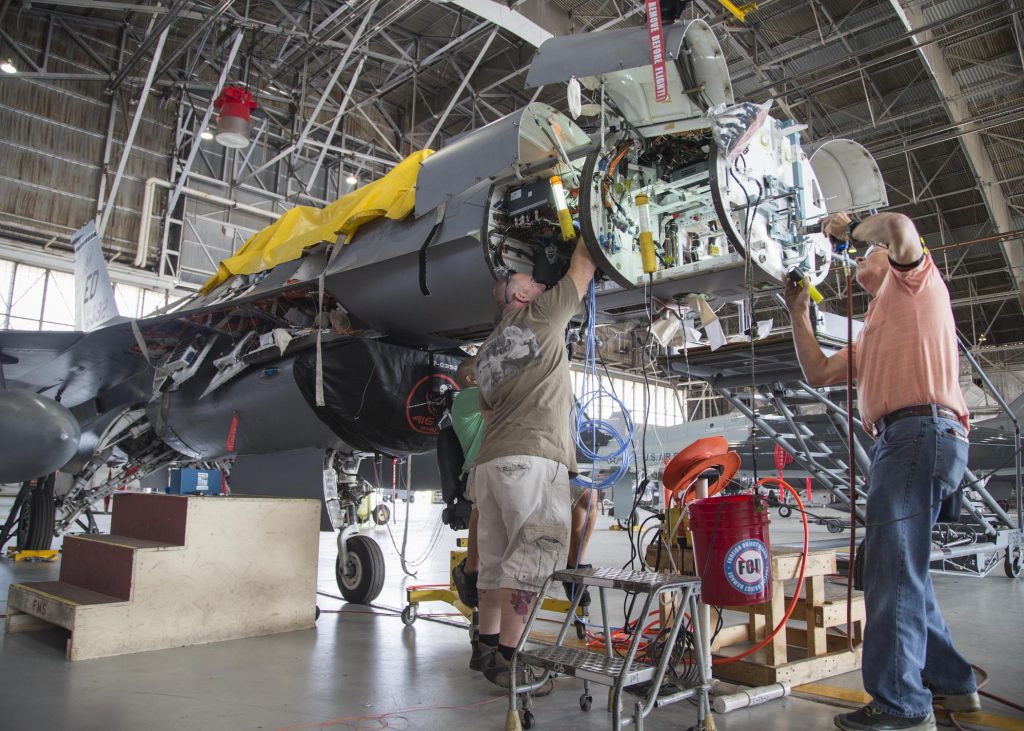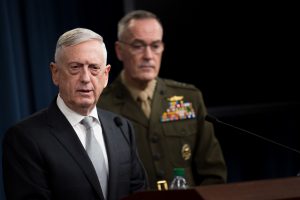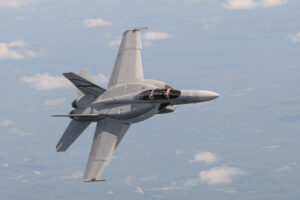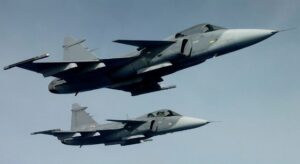Despite Trump’s Rhetoric, U.S. Defense Firms Pitch Moving Production To India
Posted on
WASHINGTON: The Trump administration has cleared the decks for what promises to be a huge increase in technology and weapons exports to India, putting the country on the same footing as members of NATO, and allies like Japan and Australia, when it comes to favored export status.
While the new status may pave the way for major U.S. defense firms to lock up multi-billion deals with the Indian government, those deals would likely come with the stipulation that production be moved to India, something American defense giants like Lockheed Martin and Boeing have promised to do, even if it runs counter to the Trump administration’s focus on creating more manufacturing jobs at home.
Such offsets, as they are known in the arms export business, are a staple of such deals and are a crucial part of negotiations.
Commerce Secretary Wilbur Ross made the announcement yesterday as part of the US government’s continuing efforts to draw closer to Delhi, partly as a bulwark against Chinese expansionism in the region. Granting India Strategic Trade Authorization status also comes as the Indian military is considering spending tens of billions of dollars on drones, fighters and helicopters made by U.S. defense manufacturers.
Ross, speaking at a U.S. Chamber of Commerce event, said the move reflects India’s efforts to abide by multilateral export rules, and “provides India greater supply chain efficiency, both for defense, and for other high-tech products.”
India’s ambassador to the United States, Navtej Sarna, added that it is a sign of trust in India’s “capabilities as an economy and as a security partner, because it also…would allow the transfer of more sensitive defense technologies,” and “fleshes out our defense partnership in a big way.”
But the new trade status can only do so much, and India’s decades-long reliance on Russian weaponry over U.S. or European equipment is something that shows no sign of changing anytime soon, a fact that rankles many on Capitol Hill.
In Washington, the House recently passed its version of the 2019 NDAA, which granted Defense Secretary James Mattis’ request to waive sanctions on partner countries that have bought Russian arms in the past, but the Senate has yet to take up the bill, and is expected to vote on it some time next month. The waivers, Mattis said in a series of letters to lawmakers, would allow the Pentagon to forge closer ties with countries like India, Vietnam, and Indonesia, by not penalizing them for having Russian equipment, even as they move closer to the U.S.
But the chronically chaotic state of the Indian military’s acquisition practices also presents significant hurdles, according to experts.
Air Marshal M. Matheswaran, former deputy chief of the defense staff in the Indian Ministry of Defense told an audience at the Stimson Center in Washington that the Indian government and military often seek to simply to “fill in technological gaps” they believe they have, rather than building strategically.
“Their procurement is a mess. They’re not joint. They’re risk adverse. They’ve just got a ton of problems,” one former White House official, who asked to speak anonymously, told me.
“Broadly, in procurement they have tried in the post-Cold War era to diversify their procurements as a political sop to potential partners,” he said. “They start to move more through the pipeline than they can actually pay for, and they end up building this very motley force in a way that’s not always coherent.”
As it stands, the United States accounts for about 12 percent of India’s defense imports, a number which is expected to grow 6.2 percent annually through 2023, according to a recent study by Avescent, a consulting firm.
The Indian defense budget, at more than $53 billion, is the fifth-largest in the world, and as the Avascent analysis noted, it “is also one of the most competitive,” as local companies battle it out, along with a mix of Russian, French, Israeli, and American firms. The air force, for example, flys Russian MiG and French Rafale fighters, along with American C-17 and C-130 transport aircraft and Israeli Heron drones.
In recent years, France has emerged as the big winner in several hard-fought awards, inking an $8.6 billion contract for 36 Rafale fighter aircraft in 2016 — which will serve as India’s primary nuclear delivery aircraft — and a deal for six Scorpene-class submarines for $4.6 billion in 2005. As part of the government’s “Make in India” initiative, most of the work on the subs will be done at the Mazagon dockyard in Mumbai.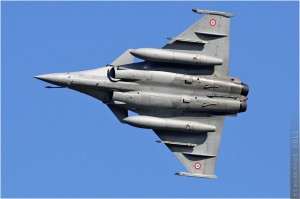
But Russia isn’t going anywhere. Moscow is on the verge of finalizing a $3.2 billion contract for four S-400 surface-to-air missile systems with India, part of about $12 billion worth of Russian arms deals in the works with the Indian government.
The two countries are also close to finalizing a $1.1 billion deal for 48 additional Mi-17-V5 military transport/utility helicopters, with final signatures expected during Russian President Vladimir Putin’s October visit to India. According to local reports, the contract will mandate that 30 percent of the work be done by the Indian defense industry, as part of the Modi government’s push to build up the Indian manufacturing sector. The helicopters joint U.S.-made Chinooks and Apaches in the country’s rotary-wing fleet.
The Indian government says that it doesn’t have a problem with such a mix and match approach, however, even if it does complicate supply chains.
Currently, the big contract up for an award is the Indian Air Force’s requirement for 110 aircraft, expected to be worth as much as $15 billion.
Boeing has announced it would join with Indian firms Hindustan Aeronautics Limited and Mahindra Defense Systems to manufacture its F/A-18 Hornet in the country if it wins the contract, and Lockheed Martin has pledged to move its entire F-16 production line to India from Greenville, S.C., to India, potentially at the expense of 250 South Carolina jobs.
“The F-16 gives the Indian industry a unique opportunity to be at the center of the world’s largest fighter aircraft ecosystem,” Lockheed exec Vivek Lall said earlier this year in his pitch, adding that the company was ready to equip the jets with the same target tracking device currently on the F-35, as well as a helmet-mounted tracking system and a new radio data link system.
Swedish defense giant Saab Group is also in the running for the fighter deal, and has announced it is ready to do a “full” technology transfer of its Gripen-E fighter jet production to India if it wins the competition.
Boeing, in conjunction with Indian manufacturer Tata has already moved part of its Apache helicopter fuselage manufacturing to India, and the factory will eventually be the sole supplier of the part for Boeing’s worldwide sales. The promise was one of the keys to the company winning the $3.1 billion deal in 2015 for 22 Apache and 15 Chinook helicopters.
While the deal for the fighter planes shakes out over the coming months, the competition is merely one part of a larger American push, which included a recent visit by the Pentagon’s top weapons buyer, Ellen Lord, and the upcoming “two-plus-two” meeting between defense minister Nirmala Sitharaman, Foreign Minister Sushma Swaraj and their American counterparts, James Mattis and Mike Pompeo.
And in a jab at the Russians, Indian officials announced this week that they would be replacing their Russian-made Pechora air defense systems around the capital in a $1 billion deal to buy the NASAMS-II, manufactured by Kongsberg and Raytheon.
Subscribe to our newsletter
Promotions, new products and sales. Directly to your inbox.

